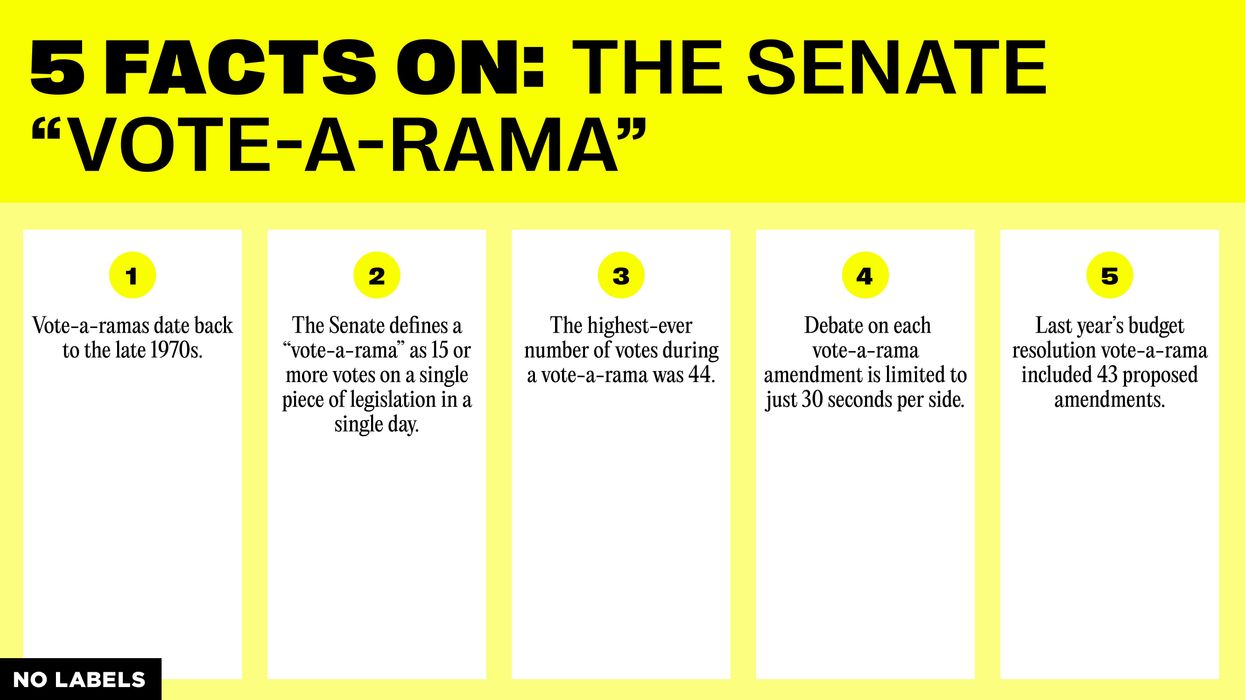
The Big Insight: An unusual Senate practice known as a “vote-a-rama” could delay the latest Democratic reconciliation package.
After months of delay, Democrats are moving a budget reconciliation package through the Senate that features significant climate and energy, tax and healthcare provisions. But the final bill must first survive a “vote-a-rama” — a unique and recent Senate custom that requires dozens of votes on all sorts of amendments. The practice — which is often deployed by the minority party — can delay legislation by forcing senators to take difficult stands on many issues, and divide the coalition needed for passage.
Here are five facts on the vote-a-rama.
1. Vote-a-ramas date back to the late 1970s.
The practice was developed between Senate leaders of both parties to quickly dispatch with remaining amendments after the 50 hours for debate for a given bill allotted by the 1974 Budget Act had elapsed. There have been 61 vote-a-ramas since the first one, in 1977. Rules for vote-a-ramas in their current form were first set in 1993 to rectify a budget impasse. Then-Senate Majority Leader Trent Lott coined the term “vote-a-rama” in 1996.
2. The Senate defines a “vote-a-rama” as 15 or more votes on a single piece of legislation in a single day.
While vote-a-ramas are most common on budget resolutions, they can take place on any legislation. There have been vote-a-ramas on energy legislation, the Farm Bill, and on the final version of the Affordable Care Act.
3. The highest-ever number of votes during a vote-a-rama was 44.
The 1974 Budget Act limits the time set for debate, but not for the “consideration” of budget measures, meaning that any amendment ruled by the parliamentarian as germane to the bill must get a floor vote. Most amendments introduced are “messaging” amendments — that often relate to issues completely unrelated to the underlying legislation — intended to force senators to go on the record on tough questions, or to delay passage of the final bill. There are no limits on how many amendments can be introduced, and vote-a-rama sessions often last through the night.
4. Debate on each vote-a-rama amendment is limited to just 30 seconds per side.
No real debate is held on each vote-a-rama amendment, and the time senators have to vote is slightly reduced from the standard 15 minutes. However, senators still get 10 minutes to vote on each, which adds up. A 2013 vote-a-rama took nearly 16 hours to complete.
5. Last year’s budget resolution vote-a-rama included 43 proposed amendments.
It took senators 14 hours to handle the amendments to the $3.5 trillion Fiscal Year 2022 budget resolution, with the final bill passing 50-49 at four in the morning. Among the amendments introduced and rejected were measures to increase funding for expulsion of migrants from COVID-heavy countries, reduce federal funding for municipalities that decline to prosecute violent crimes, block funding for the United Nations Human Rights Council, block changes to the SALT tax deduction, and fund reopening of schools five days per week.

